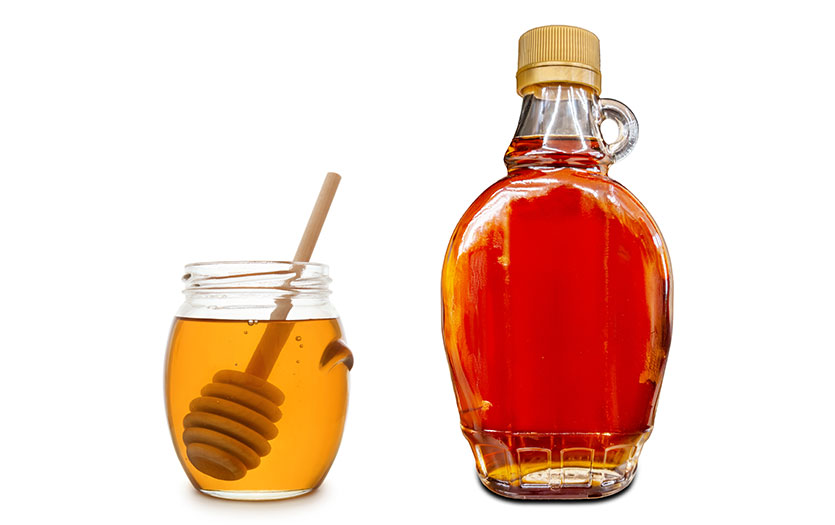
This post was written by Sarah Mohrman, RDN, LD, MA, dietitian, program coordinator, PPG – Cardiology.
Heart disease has touched most of our lives, either in our personal health or that of a family member. According to the Centers for Disease Control and Prevention (CDC), 20.1 million Americans over the age of 20 years old are currently living with some form of heart disease, as high blood pressure, diabetes, high cholesterol and lifestyle habits increase the risk. Taking action by moving your body and giving up smoking can make a huge difference, but dietary habits in particular, can improve some of the greatest contributors to our cardiovascular health, including blood pressure, cholesterol, weight management and diabetes.
But with the exhaustive sea of nutrition information out there, where does one begin? On top of that, which dietary changes will have the greatest impact on your health if you are dealing with a diagnosis of heart disease, high cholesterol or high blood pressure? This is when a registered dietitian nutritionist, like me, can help.
Making positive changes
If you are looking for a starting point, the simple answer is, the grocery store. If you change the foods you purchase at the grocery store and stock your pantry and refrigerator with low sodium ingredients, foods low in saturated fat and an abundance of produce you will be set up for a heart healthy menu throughout the week.
Begin with meal planning! Take a look at your weekly schedule, determine how much time you have to cook each evening and choose recipes that are simple enough to prepare in the time allotted.
Simple swaps
Once you have determined your menu, you have to stock up on healthy ingredients. Here is a list of some smart swaps that can lead to heart health.
- Swap out that 80/20 beef for 93/7 ground beef or ground turkey (saves 16g total fat, 5g saturated fat per 4-ounce serving)
- Swap out regular chicken broth for low sodium chicken broth (saves 730mg sodium per cup)
- Swap out canned tomatoes for no-salt-added canned tomatoes (saves 165mg sodium per ½ cup)
- Swap out frozen beef burgers for 93/7 turkey burgers (saves 120 calories, 15g total fat, 6.5g saturated fat)
- Swap out 1 teaspoon of salt on your veggies for a Mrs. Dash seasoning blend (saves 2,300mg sodium)
- Swap out soy sauce for a low sodium coconut liquid amino substitute (saves 570mg sodium per tablespoon)
- Swap out a box of seasoned rice for a 90 second pouch of whole grain brown rice (saves 715 mg sodium, adds 1g fiber per 1 cup cooked)
- Swap out a regular pasta sauce for a low sodium version (saves 265mg sodium per ½ cup)
- Swap out regular snack crackers for “Hint of Salt” version (saves 145mg per 16 crackers)
- Swap out regular potato chips for the baked version (saves 55 calories, 7g total fat, 1.5g saturated fat and 30mg sodium per 15 chips)
These simple adjustments can lower the sodium and saturated fat in your foods by quite a bit. Try applying some of these healthy swaps to your favorite recipes.
Turn up the plant power
While you’re shopping, go to the produce section first and load up on colorful, nutritious options. After your cart is filled up with whole, natural produce, stick to the outer edges of the grocery store as much as possible. The center aisles tend to be full of sodium, sugar and processed foods.
Another idea would be to consider incorporating one meatless meal per week. Consider Meatless Mondays, subbing in healthy fiber and protein-packed beans, nuts and legumes as a protein substitute for meat. Meatless Mondays isn’t about subtracting foods from your diet – it’s about adding! Adding meals with beans and more produce will boost your soluble fiber intake and the anti-inflammatory effects of produce, which bolsters your heart health. You can find a recap of my “Ten weeks to plant-powered eating” series here.
Go fish
While on the topic of meats, opt for healthier Mediterranean-style meals, such as wild caught salmon, twice a week. Salmon, mackerel, trout and tuna filets are all rich in omega-3 fatty acids that can help protect the heart. Enjoy your fish with a dark leafy green salad tossed in a vinegar-based dressing and a whole grain, such as brown rice or quinoa. Finish your meal with a serving of dark berries or fresh fruit. Aim for half of your plate to be full of non-starchy vegetables, such as greens, broccoli, cauliflower, carrots, mushrooms, green beans, asparagus or Brussel sprouts.
At the end of the day, your goal should be to limit processed foods of all kinds – processed meats, prepackaged seasoning mixes and boxed or bagged meals – while boosting whole foods that are high in fiber and nutrients and low in sodium, saturated fat and sugar. If anything, remember these words to lower your risks for heart disease, diabetes and other chronic health conditions:
“Eat food. Not too much. Mostly plants.” – Michael Pollan
One recipe – three ways
To put our swaps into perspective, let’s look at how some easy swaps can impact one recipe. The first option would be a perfect “Meatless Monday.” The second, using 93/7 ground turkey instead of tempeh, is a heart healthy dish created with low sodium ingredients. The third option, made with 80/20 ground beef and other sodium-rich ingredients, would not be considered heart healthy but serves as a comparison. Look at the differences in the nutritional analysis and consider how some simple swaps could change most of the recipes you’re currently consuming.
Meatless Monday Tempeh Burrito Bowl
3 cups cauliflower rice
1 can no-salt-added black beans, drained and rinsed
1 can no-salt-added corn, drained and rinsed
6 cups spring mix
1 large avocado
1 cup low sodium salsa (compare labels)
½ cup plant-based queso style cauliflower dip (can be found at most major grocery stores, often in the deli area)
Tempeh**
1 8-ounce block tempeh
2 tablespoons water
1 tablespoon no-salt-added tomato paste
1 tablespoon low sodium coconut liquid aminos (soy sauce substitute)
1 tablespoon maple syrup
1 tablespoon lime juice
1 tablespoon olive oil
½ yellow onion, diced
3 cloves garlic, minced
2 teaspoons chili powder
1 teaspoon ground cumin
1 teaspoon smoked paprika
¼ teaspoon black pepper
- Cook cauliflower rice according to the package instructions. While the rice is cooking, prepare the other ingredients.
- To prepare the tempeh, first roughly grate the block of tempeh or use clean hands to crumble it over a bowl.
- Combine water, tomato paste, soy sauce substitute, maple syrup and lime juice in a bowl. Set aside.
- Warm a frying pan over medium-low heat. Add the oil and diced onion. Cook, stirring frequently, for 3 minutes or until fragrant. Add crumbled tempeh, minced garlic, chili powder, cumin, smoked paprika and pepper. Cook, stirring frequently, for 3 minutes or until the tempeh browns. If needed, you can add an extra dash of water or oil to prevent sticking. Then, add the liquid “marinade” and cook for another 5 minutes.
- Divide the rice, black beans, corn, lettuce and tempeh among serving bowls. Add the toppings of your choosing, including avocado, salsa and plant-based queso. Enjoy!
Nutrition per tempeh bowl serving (makes 4 bowls): 500 calories; 18g fat; 2g saturated fat; 530mg sodium; 49g carbohydrate; 20g fiber; 26g protein
**You can make this recipe with 8 ounces of 93/7 ground turkey.
Nutrition per turkey bowl serving (makes 4 bowls): 478 calories; 16g fat; 2g saturated fat; 573mg sodium; 48g carbohydrate; 16g fiber; 25g protein
**Compare other options to a traditional burrito bowl made with 8 ounces of 80/20 ground beef, white rice rather than cauliflower rice and traditional queso.
Nutrition per beef bowl serving (makes 4 bowls): 628 calories; 25g total fat; 6g saturated fat; 1561mg sodium; 75g carbohydrate; 13g fiber; 25g protein



